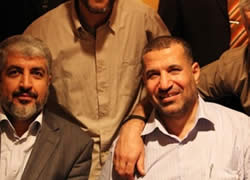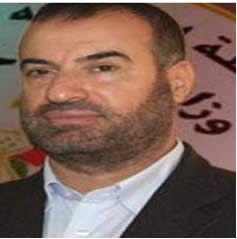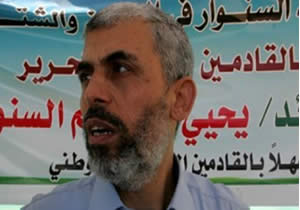http://www.terrorism-info.org.il/en/article/20333
Overview
1. In the middle of April 2012 secret elections were held for Hamas’ leading institutions in the Gaza Strip, with the following results:
1) The General Shura Council, the highest Hamas authority in the Gaza Strip, is comprised of 77 representatives.
2) The political bureau, the highest decision maker in the Gaza Strip, appointed by the General Shura Council, has 15 representatives.
2. The elections in the Gaza Strip were one stage in the general elections for the Hamas’ leadership, which have not yet ended. Elections still have to be held in the external arenas and in Judea and Samaria. The final round will be the election of the chairman of the Hamas Executive Committee, the most important figure in the movement (currently Khaled Mashaal). The Hamas elections took place during the dramatic events unfolding in the Middle East, influencing Hamas in general and its elections in particular.
3.Ismail Haniya was elected chairman of Hamas’ political bureau in the Gaza Strip; he is also head of the Hamas government. Imad al-Alami, a senior member of the Hamas movement in Damascus who recently returned to the Gaza Strip, was elected as his deputy. Others elected to the political bureau were Mahmoud al-Zahar, Ahmed al-Jaabari, Yasser Musa, Nizar Awadallah, Rawhi Mushtaha, Yehya Sinwar, Fathi Hamad, Fuad al-Nahal, Sameh Saraj, Khalil al-Hayeh, Walid al-Amoudi, Marwan Issa and Ziyad al-Zaza.
The Significance of the Election Results
4. The election results indicated a number of basic trends:
1)There was an increase in the power and independence of the Hamas leadership in the Gaza Strip within the movement. On the other hand, there was a weakening of the external leadership, following the dismantling of the movement’s headquarters in Damascus and the dispersal of its senior figures to various countries in the Arab world (and the Gaza Strip).
2) There was a rise in the power of Hamas’ military-terrorist wing within the Gaza Strip leadership, as evidenced by the election of several of its senior figures to movement institutions, particularly Ahmed Jaabari and Marwan Issa, elected to the political bureau. That indicates both their aspiration to extend their influence beyond the military-terrorist sphere to Hamas movement and governmental levels, and the great support the military-terrorist wing has within Hamas’ rank and file.

Ahmed Jaabari and Khaled Mashaal in Cairo
(Picture from the shehab.ps website, May 3, 2012).
3) There was a blurring of the borders between the movement and the Hamas government in the Gaza Strip, and to a great extent also between those holding military-security positions and those holding movement-governmental positions. Obvious examples are Ismail Haniya (head of the Hamas government and chairman of the political bureau), Fathi Hamad (member of the political bureau, minister of the interior in the Hamas government, and in charge of the internal security forces) and Ahmed Jaabari (the highest-ranking member of Hamas’ military-terrorist wing and a member of the political bureau as well).
4) In our assessment, the increased numbers of senior Hamas military-terrorist wing figures in the movement leadership will not immediately change Hamas policies, as there are restraining factors. However, they may influence Hamas strategies in the coming years, increase the Gaza Strip’s potential for instability and make the situation more explosive, presenting a significant challenge for Israel.
5) For the significance of the election results, see the Appendix
Appendix
The Significance of the Results of the Elections in the Gaza Strip
1. The results of the elections in the Gaza Strip indicate the following:
1) A generation shift in the political bureau: Eight of the 15 new members elected are middle-aged, forcing some of the old guard leadership to step down. Thus majority precedence and influence have now been passed from the old guard to the middle generation, a process initiated a number of years ago.
2) The strengthening of the military-terrorist wing within Hamas:
A) Several members of the military-terrorist wing were elected to Hamas political institutions, particularly Ahmed Jaabari and Marwan Issa, who were elected to the political bureau. That is an indication of the strength of the military-terrorist wing within the movement and the aspirations of its senior members to extend their influence beyond the spheres of military and security actions. However, the efforts of the senior military members, in our assessment encouraged by Khaled Mashaal, failed to prevent the election of Mahmoud al-Zahar to the political bureau.
B) One of those elected to the political bureau was Fathi Hamad. In addition to serving as minister of the interior and being responsible for Hamas’ internal security apparatuses, he is also involved in military-terrorist activities. Thus he also heads a terrorist group calling itself “The Defenders of Al-Aqsa.” It promotes Hamas’ low-signature terrorist attacks against Israel without admitting Hamas’ responsibility for them.

Fathi Hamad
(Picture from the akhbarelyom.org.eg website, May 12, 2012)
3) Integration of Palestinian terrorists released from Israeli jails in the Gilad Shalit prisoner exchange deal into the movement leadership in the Gaza Strip: Conspicuous was the election of Yehya Sinwar and Rawhi Mushtaha, former members of Hamas’ military-terrorist wing, to the political bureau. Other released terrorists were elected to the General Shura Council, indicating a swift incorporation of released Palestinian terrorists into every sphere of Hamas activity, an indication of the respect they command from the movement’s activists and their close links with senior members of Hamas’ military-terrorist wing.

Yehya Sinwar
(Picture from the paltimes.net website).
4) Substantial gains for senior members of the Hamas external leadership formerly located in Damascus: Particularly conspicuous was Imad al-Alami, one of the heads of the external leadership, who operated from Damascus after having been expelled from the Gaza Strip in the early 1990s. He was elected deputy chairman of the political bureau in the Gaza Strip, meaning he officially left the external leadership and integrated into the local leadership, a manifestation of its growing strength and status at the expense of the external leadership.
5) Blurring the boundaries between Hamas’ governmental apparatus and the Hamas movement in the leadership of the Gaza Strip: Many senior members of the Hamas government were elected to the Hamas leadership. Prominent among them were Ismail Haniya (head of the Hamas government and chairman of the political bureau) and Fathi Hamad (member of the political bureau, minister of the interior and in charge of the internal security apparatuses). The results of the elections indicate what Hamas regards as a merger between the movement and the government.









